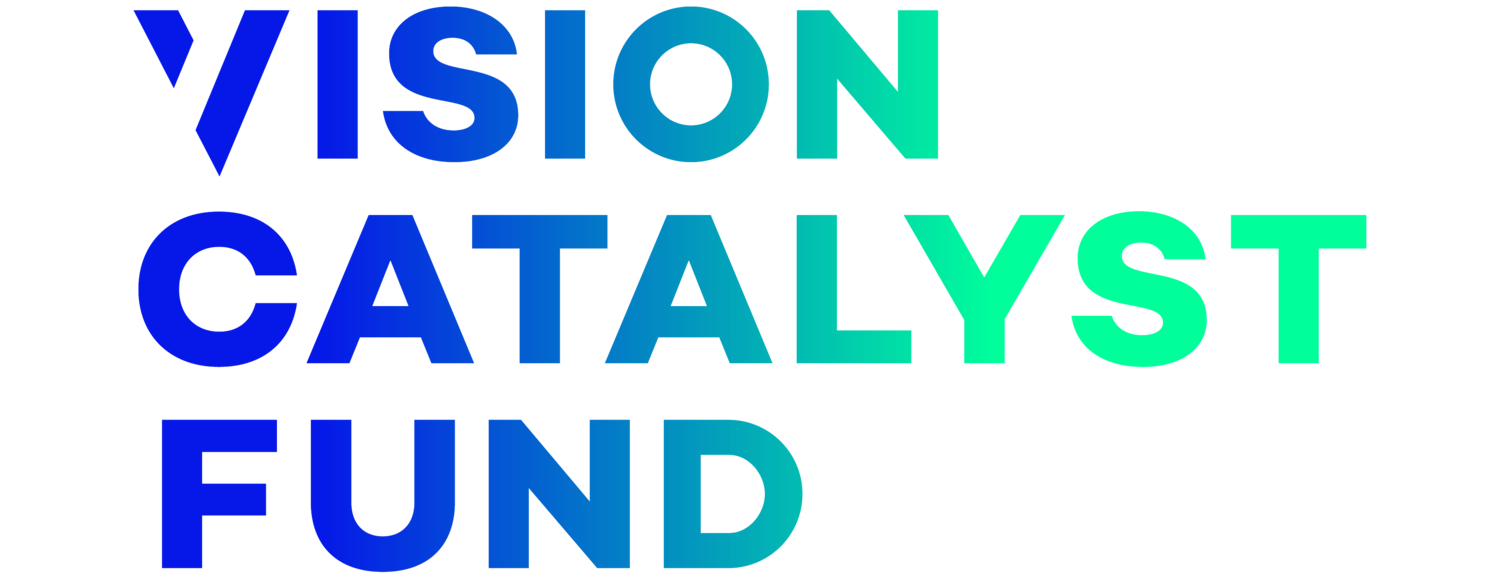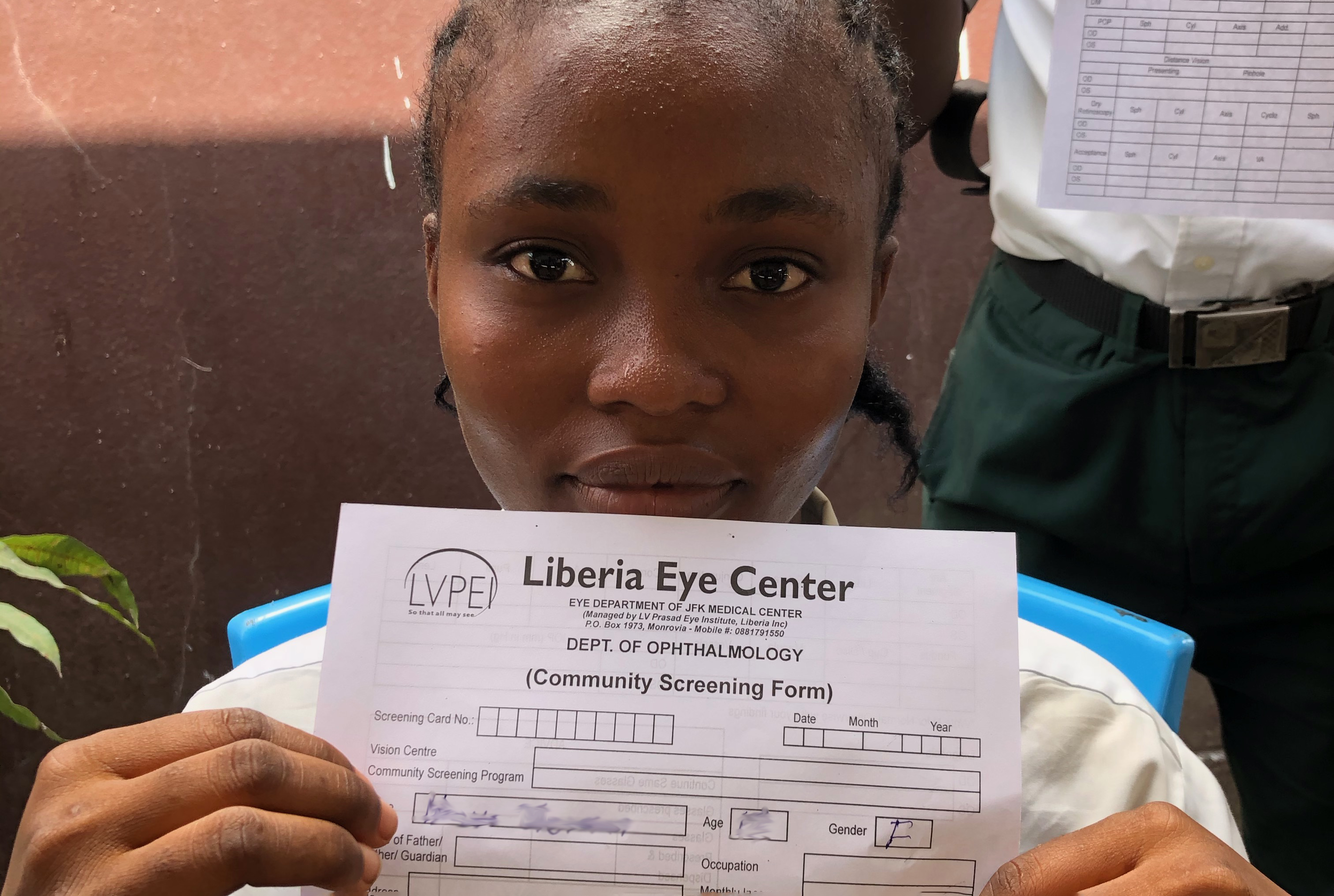Government-led school eye health is affordable, efficient, and within reach
The Vision Catalyst Fund is delighted to welcome Jay Corless from EYElliance. He executes the organisation’s cross-sector collaboration and partnership work, providing the communications and relationship management needed to engage global development organisations in advancing EYElliance’s mission.
School Eye Health Day at Mary Brownell High School, Monrovia, Liberia
Today is School Eye Health Day at Mary Brownell High School in Monrovia, Liberia. The Ministry of Education, teachers, and partners from the EYElliance consortium will visit to screen students for eye problems and dispense glasses to those who need them. The principal addresses students before they enter school. He knows that good vision is critical to their ability to benefit from the education his teachers and school offer and volunteered his school as one of 50 schools to participate in the Monrovia roll-out of a national school eye health program. While Sightsavers simultaneously conducted school screenings in two counties in southern Liberia.
As the students arrive and line up for school, the principal announces the day's work and explains that teachers will be screening students to identify those who need glasses. In Liberia, as with a majority of children worldwide, only a fraction has access to eyeglasses. School eye health programs can safely and accurately identify and treat children with vision problems in low- and middle-income countries.
Seeing the blackboard is a problem for students with vision impairment
The school principal and his team know the students who arrive early for class or sit by a friend or sibling to understand what is on the blackboard. They have an early idea of who will need glasses. 80% of all learning during a child's first 12 years is visual. Myopia or nearsightedness is the most common cause of visual impairment in children. Worldwide, 312 million children have myopia, which is often diagnosed between the ages of 8 and 12. The condition is easily corrected with eyeglasses.
Two Teachers can do it
In 2017, the Liberian ministries of education and health collaborated with the EYElliance consortium of partners (LV Prasad Eye Institute, Sightsavers, OneSight, 2.5 New Vision Generation, Our Children’s Vision) to develop a government-led school eye health approach. Each partner plays a specific role in the program. School eye health consists of three activities. First, teachers are trained to screen children on-site at schools. At Brownell High, two of the youngest staff members volunteered to be teacher screeners.
Eye Care Professionals then carry out an in-depth examination
Second, children identified by teachers with vision problems are examined by an eye health professional. Dr. Douglas, pictured above, from the LV Prasad Eye Institute, can determine the prescription the young students need and can provide them with a pair of ready-to-clip eyeglasses on the spot. If the visiting professional can’t prescribe eyeglasses because the student’s needs are more complicated, over 80% of children get ready-to-clips immediately, they refer the student to a nearby eye health facility for more care.
Standardisation Facilitates Government Ownership
Hawa, pictured, filled out her datasheet and waits to be examined by Dr. Douglas. The data collected is entered into a national system used by partners and the ministries. The national program's success depends on three broad principles: 1) national standardisation of training and data collection; 2) government ownership, and 3) filling technical gaps with external expertise.
Partnering up for Success
The consortium’s goal is to reach all children in public primary and secondary schools in 12 of the 15 country's counties with school-based vision screening and free eyeglasses within four years. The government hopes to then extend the program to the 3 remaining counties the following years. Twelve counties represent 480,000 children or 58 % of those attending public schools. Ready-to-clip glasses for children were donated by 2.5 New Vision Generation, which is the inclusive business arm of Essilor, the leading manufacturer of ophthalmic lenses globally.
Everyone Benefits
The Liberia school eye health program was recently a part of a World Bank costing analysis and report on school eye health benefits to achieving inclusive education. The World Bank report concluded that "school eye health programs are affordable and should be a priority for ensuring that education systems are inclusive." For her part, Hawa, now with a new pair of glasses, says that she is one step closer to becoming a journalist.







